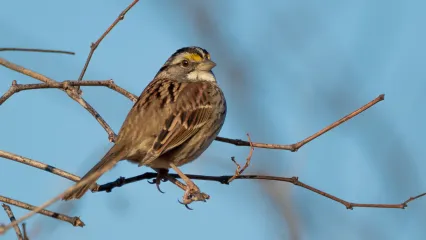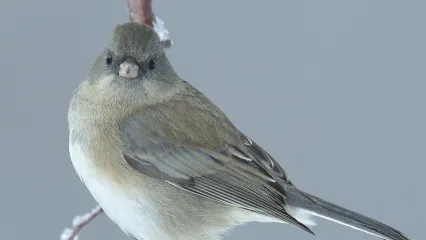
Description
This species is named for its distinctive bright white throat patch that stands out against its grayish chest and cheeks. It has a dark gray bill and a distinct yellow spot between the bill and each eye. On each side of the face, a thin black stripe extends from the base of the bill, and through the eye to the back of the head. Two thicker black stripes run from the bill across the top of the head. Three white or tan stripes run between these four black stripes. White-throated sparrows closely resemble white-crowned sparrows, which have a pinkish colored bill (instead of gray), lacks a yellow spot in front of each eye, and lacks the stark white throat patch.
Size
Approximately 6.3 to 7.1 inches in length. Wingspan of 7.9-9.1 inches.
Habitat
This is a common sparrow in woodlands, streamsides and forested habitats. They are frequently seen in residential neighborhoods that have mature trees and shrub cover. White-throated sparrows are found in central and eastern Oklahoma from late October through early May.
Life Cycle
At feeders, white-throated sparrows eat millet and black-oil sunflower seeds. Away from feeders, they eat small seeds and ground insects.
How To Observe
These birds are usually seen on the ground under feeders or beneath large trees and shrubs. They prefer to feed on or near the ground and will visit platform-type feeders placed 6 to 18 inches off the ground. They are often seen in small groups of three to 15 birds, usually near the cover of shrubs and mature trees.


